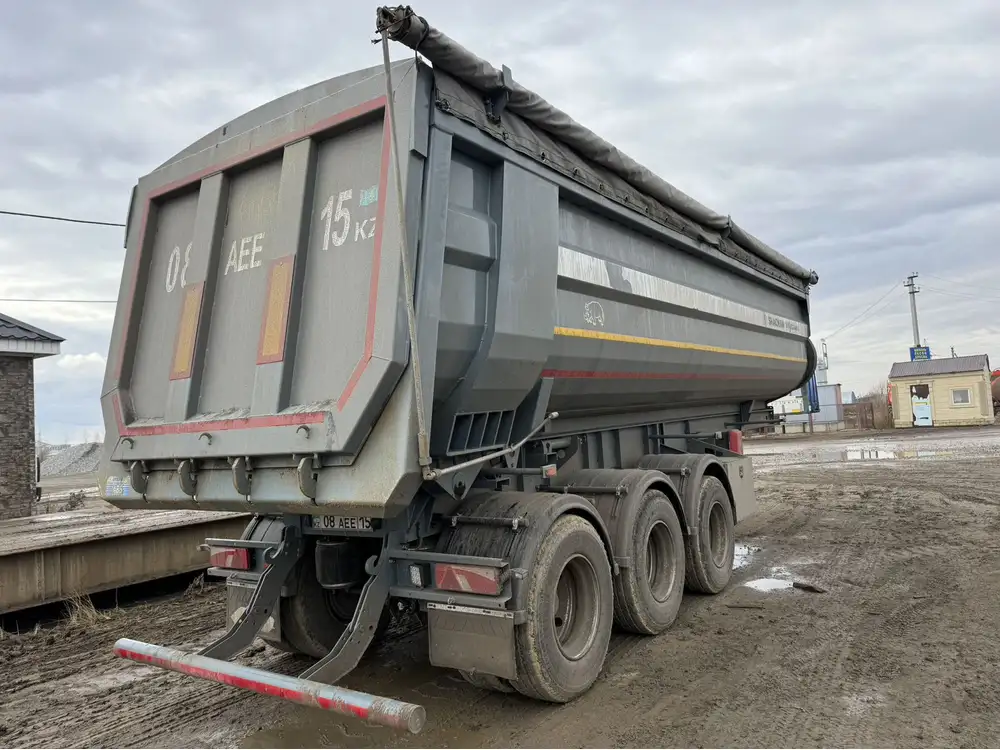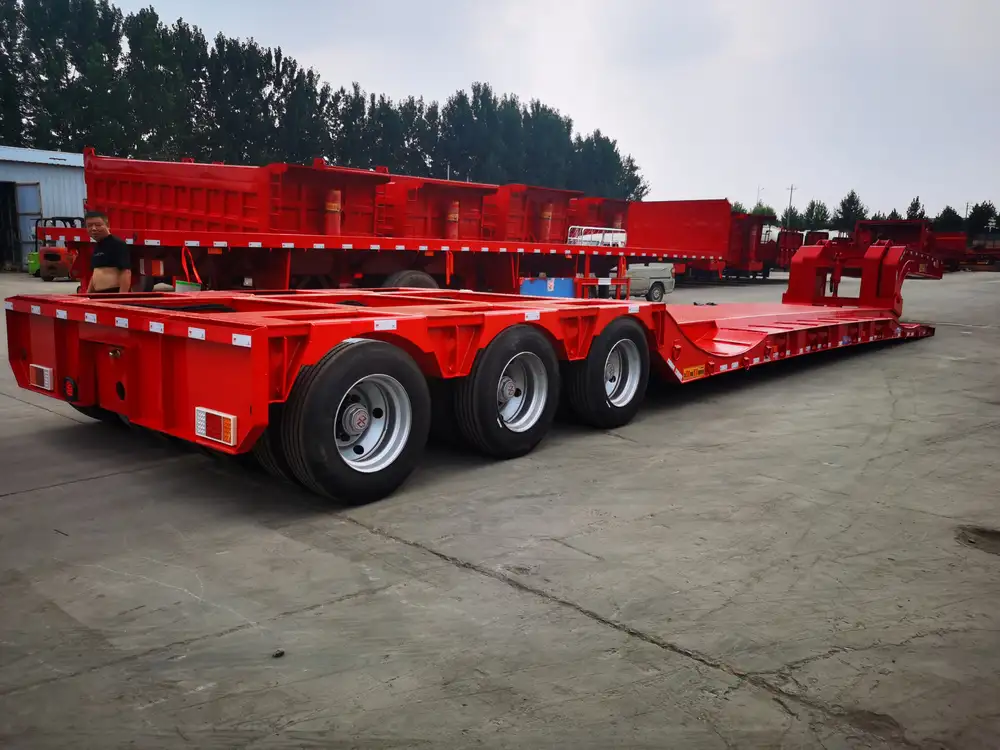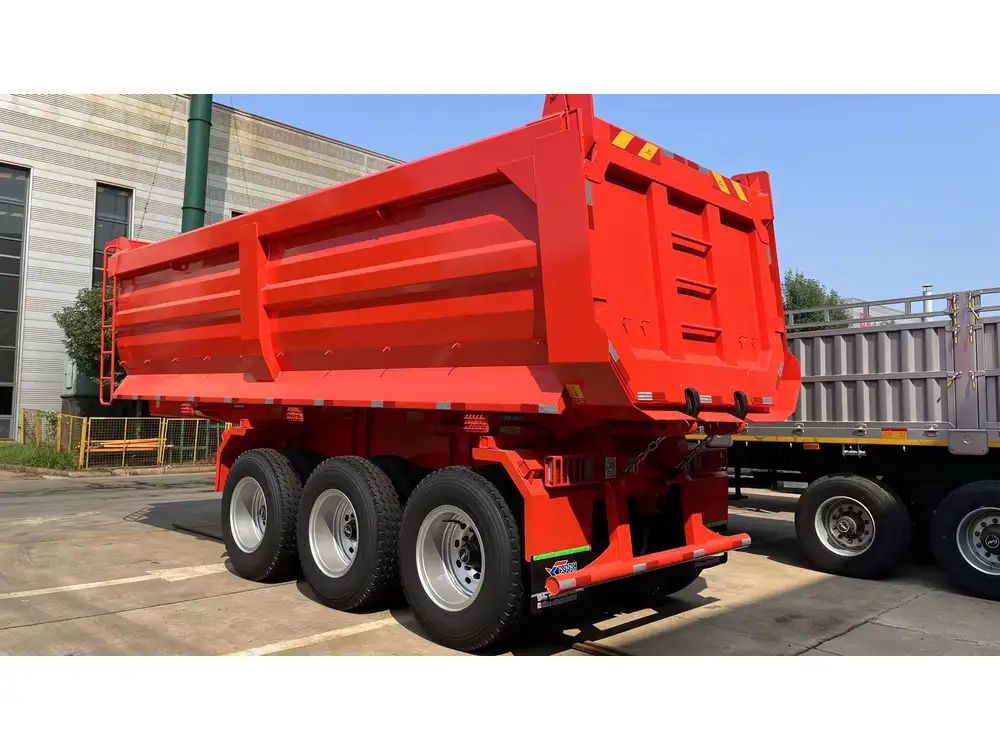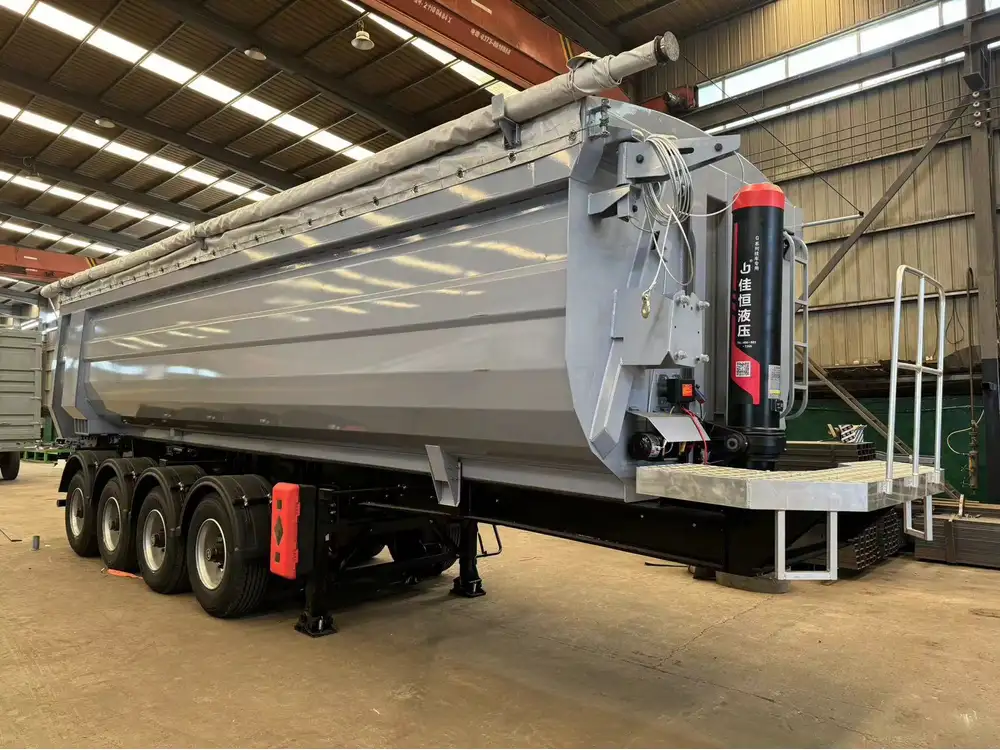When operating semi-trailers, understanding key components like the dump valve is crucial for safety and efficiency. A trailer dump valve, primarily used in dump trailers, allows for the quick release of air pressure, facilitating the unloading of cargo. Any malfunction or oversight in the functionality of this valve can lead to delays, increased operational costs, and potential safety hazards. In this comprehensive guide, we will elaborate on how to check a trailer dump valve, including the signs of malfunction, detailed inspection processes, and preventative maintenance practices.
Understanding the Dump Valve
What is a Trailer Dump Valve?
A trailer dump valve, often an essential element of a trailer’s air brake system, enables quick venting of air to the atmosphere. This function can be crucial when a trailer needs to lower its bed to unload materials rapidly. The valve operates by controlling airflow, either allowing air to escape or holding it within the system.

Why is Checking the Dump Valve Important?
Regularly checking the dump valve ensures that the trailer’s unloading mechanism operates correctly. Faulty valves can lead to loss of air pressure, resulting in the trailer not lowering efficiently or, worse, creating hazardous conditions on the road. Immediate checks can prevent potentially catastrophic malfunctions during critical operational hours.
Signs of a Faulty Dump Valve
Indicators of a Malfunctioning Dump Valve
Identifying a malfunction earlier can save time and costs. Here are some signs that may indicate a problem:
- Air Leak Sounds: A hissing or wheezing sound when the vehicle is in use may indicate an air leak from the valve.
- Slow Dumping: If the trailer takes longer than usual to drop its load, this may be a non-functional or slow-responding valve.
- Inconsistent Pressure: Fluctuating air pressure levels may signify a faulty valve.
- Visual Corrosion or Damage: Check for rust, debris, or any visible deterioration around the valve area.

Step-by-Step Process: How to Check a Trailer Dump Valve
Required Tools
Before commencing the inspection, gather the following tools:
- Air pressure gauge
- Wrench set
- Cleaning cloth
- Soapy water solution (for leak detection)
- Safety goggles
- Gloves
1. Safety First
Prioritize safety by engaging the parking brake and ensuring the trailer is on level ground. Wear safety goggles and gloves before handling any components.

2. Locate the Dump Valve
Identify the dump valve, typically situated on the trailer frame and connected to the pneumatic system. Consult your trailer’s maintenance manual if the location isn’t clear.
3. Visual Inspection
Perform a thorough visual inspection for signs of wear or damage:
- Corrosion: Look for rust or corrosion around the valve body and fittings.
- Connections: Ensure that all connections are tight and free of debris.
- Physical Damage: Check for bent, cracked, or broken components that could affect performance.
4. Pressure Testing the System

Using an Air Pressure Gauge
- Connect the Air Pressure Gauge: Attach the air pressure gauge to the valve or the nearest available connection point.
- Check Reading: Ensure the air pressure is within the recommended levels indicated in the trailer manual.
- Start the Truck: Let the truck engine run for a few minutes to build air pressure.
- Observe Continuous Pressure: After a few minutes, watch the gauge. If the pressure drops significantly without any action taken, the dump valve may be leaking.
5. Leak Detection Test
Leak detection ensures your valve is holding pressure adequately:
- Prepare Soapy Water Solution: Mix soap and water in a spray bottle.
- Spray Solution: Lightly spray the soapy solution around the valve area and connections.
- Look for Bubbles: Bubbles forming indicate air leaks. Note down any areas needing further attention.
6. Functional Test
To ensure the dump valve operates correctly:
- Engage the Truck’s Air System: Activate the air system per the manufacturer’s instructions.
- Operate the Valve: Engage the dump valve while monitoring its response.
- Observe Reaction: The trailer should lower smoothly without any unusual sounds or delays.

7. Maintenance Recommendations
Regular maintenance can mitigate issues with the dump valve. Here are some essential practices:
| Maintenance Practice | Frequency | Description |
|---|---|---|
| Visual Inspection | Monthly | Inspect for rust, damage, and loose fittings. |
| Pressure Testing | Quarterly | Ensure air pressure levels are stable and consistent. |
| Cleaning | Annually | Clean the valve and surrounding components to prevent buildup. |
| Functional Testing | Quarterly | Test the valve’s operation to ensure proper function. |
Troubleshooting Common Issues
Common Problems and Solutions
Despite regular check-ups, issues can still arise. Here’s how to troubleshoot common concerns:

Problem: Air Leak Detected
- Solution: Replace damaged seals and gaskets promptly. Tighten connections if they are loose.
Problem: Slow Response Time
- Solution: Check the air pressure to ensure it’s adequate. If not, diagnose the source of air loss, which could be either the valve itself or upstream in the air system.
Problem: Inconsistent Air Pressure
- Solution: Verify that other components in the air system are intact and functioning. Test the integrity of the trailer’s pneumatic system.

Concluding Thoughts
A trailer dump valve plays an essential role in the efficient operation of semi-trailers, impacting not only the ease of unloading but also the overall safety of the transport process. By understanding how to check the trailer dump valve and regularly maintaining it, operators can avoid costly repairs, delays, and potential safety hazards. Implementing a structured inspection process, being aware of the signs of malfunction, and practicing regular maintenance are critical for maximizing your trailer’s performance.
Frequently Asked Questions
How often should I check my trailer dump valve?
While inspections should ideally take place monthly, if the trailer is actively in service, checking the system bi-weekly is advisable.

Can I replace the dump valve myself?
Yes, provided you possess the necessary tools and skills. However, consulting a professional mechanic may be beneficial for complicated replacements.
What should I do if I can’t fix my dump valve?
If you encounter persistent issues, contact a professional repair service to ensure safety and compliance with regulations.
Through proactive inspections and a deep understanding of the dump valve’s function, you are ensuring not only the efficiency of your operations but also the safety of your drivers and cargo.



